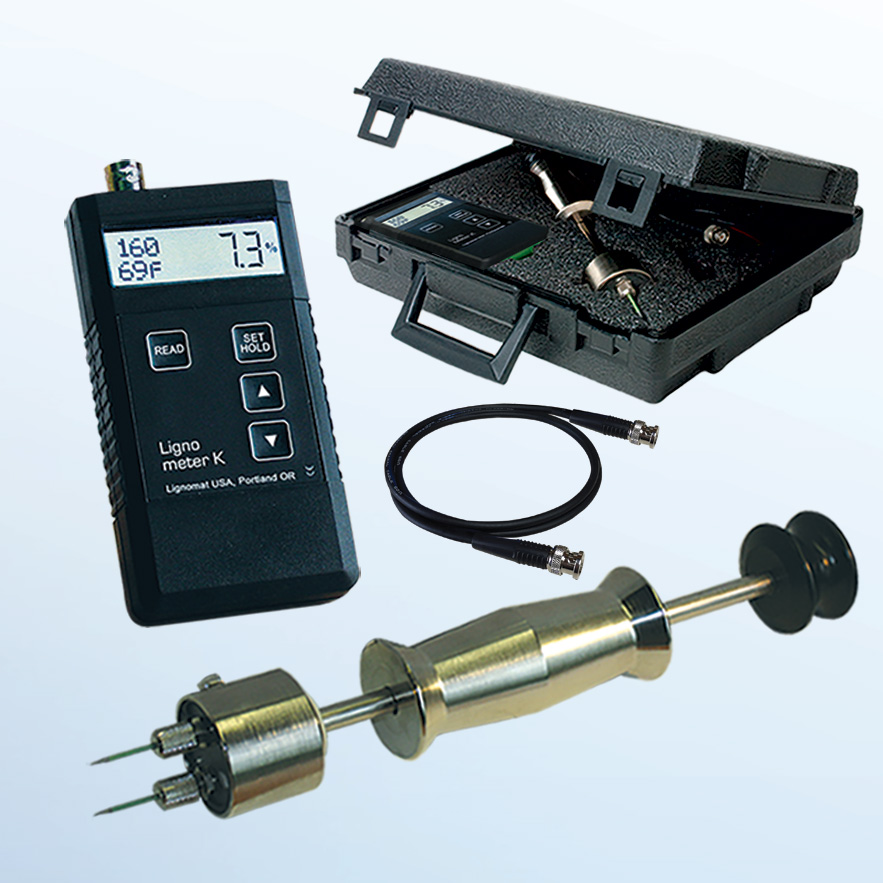Just How a Moisture Meter Can Boost Your Building And Construction Tasks and Prevent Damage
Just How a Moisture Meter Can Boost Your Building And Construction Tasks and Prevent Damage
Blog Article
Explore the Globe of Moisture Meters: Every Little Thing You Need to Know
In the world of moisture meters exists a globe of precision and functionality that usually goes unnoticed. These gadgets, while relatively straightforward, hold a wealth of information that can substantially influence numerous industries and applications. Understanding exactly how moisture meters run, the various kinds readily available, and their diverse uses can lose light on their relevance in ensuring quality and effectiveness. By checking out the ins and outs of dampness meters, one can uncover a beneficial tool that transcends mere dimension, using understandings that can make a significant distinction in many areas.
Exactly How Moisture Meters Work
Moisture meters run by measuring the electric conductivity or capacitance of materials to identify the moisture content existing. These meters are very useful devices across various sectors, including woodworking, farming, and building and construction. By utilizing various methods such as pinless or pin-type innovation, wetness meters give precise readings that assist experts make notified decisions.
Pin-type dampness meters work by putting the sharp pins into the material being tested. On the various other hand, pinless wetness meters make use of electromagnetic signals to scan a bigger area without causing any type of damages to the product's surface.
No matter the method used, moisture meters play a crucial role in preventing concerns such as mold development, architectural damage, or item issues brought on by excess dampness. Comprehending exactly how these meters job is important for making sure the quality and stability of products in numerous applications.
Kinds Of Moisture Meters
Provided the essential duty moisture meters play in numerous markets, it is important to understand the different types offered to specialists for accurately evaluating wetness degrees - Moisture Meter. There are largely two main kinds of wetness meters: pinless and pin-type dampness meters

On the various other hand, pinless dampness meters utilize electro-magnetic sensor plates to check a larger location of the material without triggering any damages. This kind is suitable for swiftly scanning big locations and is typically made use of for floor covering, walls, and ceilings. Pinless meters are practical for taking analyses on finished surface areas without leaving any kind of visible marks.
Both sorts of moisture meters have their benefits and are chosen based upon the specific demands of the work at hand. Recognizing the differences between these types is vital for experts to make exact moisture analyses.
Applications Across Industries
Building and construction specialists depend on moisture meters to analyze the wetness levels in structure materials like timber, concrete, and drywall, which is critical for keeping architectural integrity and protecting against problems like rot or mold. The floor covering market utilizes dampness meters to measure the dampness content in subfloors prior to setting up different floor coverings, avoiding costly problems due to excess dampness. In the food market, wetness meters are used to monitor and regulate moisture degrees in products such as grains, nuts, and dried fruits to keep freshness and top quality.
Tips for Using Dampness Meters
When measuring the dampness material in various products,Use the dampness meter's calibration setups to guarantee precise analyses. Calibration additional reading is essential for the correct performance of a moisture meter. Prior to each use, it is suggested to inspect and adjust the calibration settings according to the certain product being evaluated. Furthermore, make sure the meter is set to the appropriate moisture array for the material you are gauging to acquire one of the most precise results.
When utilizing a pin-type wetness meter, put the pins to the ideal deepness advised for the product being examined. This ensures that the moisture readings are taken from the correct depth within the product, supplying an extra accurate depiction of its dampness web content. For pinless dampness meters, bear in mind to keep correct call with the product's about his surface to get reputable analyses.
Regularly check and change the batteries in your dampness meter to stop unreliable readings as a result of low power. When not in usage to extend its lifespan and keep its precision, Store the meter in a completely dry and risk-free location. By following these tips, you can maximize the efficiency of your wetness meter and acquire precise dampness material measurements throughout various materials.
Upkeep and Calibration
To make certain the accuracy of dampness content measurements, normal maintenance and calibration of the wetness meter are essential steps in its appropriate performance. Calibration readjusts the dampness meter to guarantee that it provides consistent and trustworthy outcomes.
Calibration must be performed regularly, specifically if the dampness meter is used often or in essential applications where accurate dimensions are called for. Numerous dampness meters feature calibration tools or can be calibrated by expert solutions. Moisture Meter. It is advised to maintain a log of calibration dates and results to track the performance of the wetness meter gradually. By keeping and calibrating the moisture meter frequently, individuals can rely on the precision of the dampness web content measurements obtained.
Verdict

To conclude, dampness meters play a vital role in numerous markets by accurately determining the moisture material of products. Recognizing exactly how these tools function, the various kinds available, and proper maintenance and calibration are essential for obtaining reliable results. Whether in building, her response manufacturing, or agriculture, using dampness meters assists ensure high quality control and efficiency in procedures.

In conclusion, dampness meters play a critical function in different industries by properly determining the moisture web content of products.
Report this page